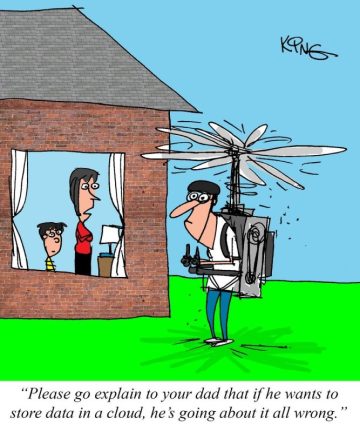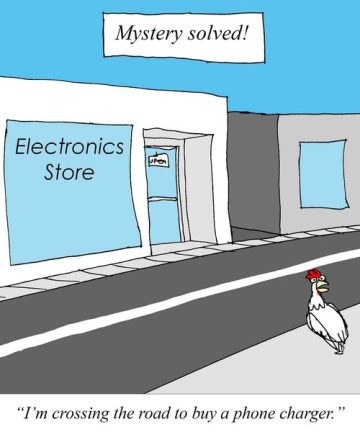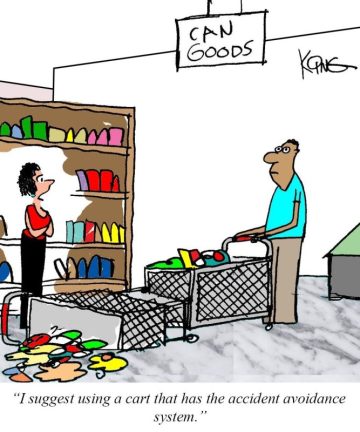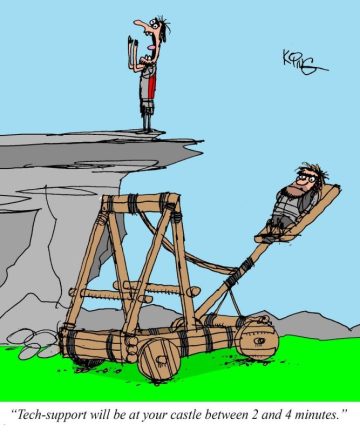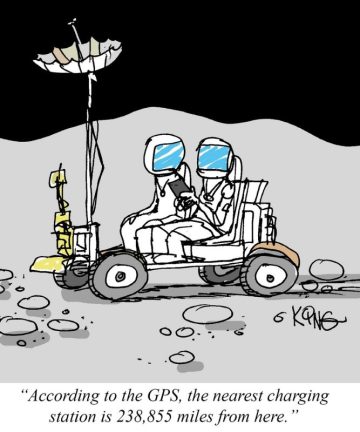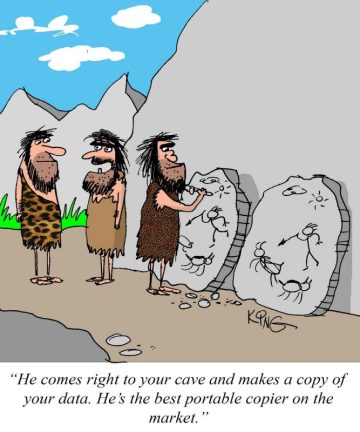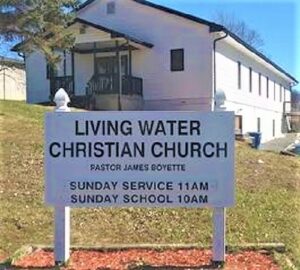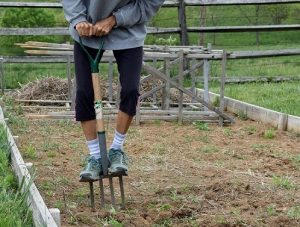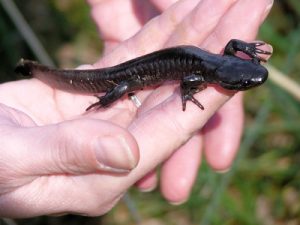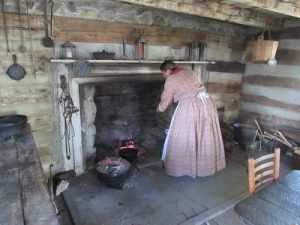Agriculture
Natural service vs artificial insemination
Natural service (NS) and artificial insemination (AI) are the two most popular breeding programs used by cattle breeders and producers worldwide. Here’s an overview of these methods.
• Natural service is used by most cattle breeders and producers. It’s the natural breeding method where the cow and bull are allowed to mate without technological intervention. In other words, the bull and cow mate as they naturally show heat.
Although the bulls must be fed and taken care of all year, this method is relatively hands-off and doesn’t require special equipment.
• Artificial insemination is reproduction achieved by human intervention. It involves collecting sperm cells from a bull and manually depositing them directly into a cow’s reproductive tract.
This breeding method is labor-intensive and requires farmers to invest in expensive facilities, equipment, and estrous synchronization drugs. However, it often results in improved reproductive performance and herd genetics. In addition, AI reduces the risk of disease transmission.
Some farmers use a combination of both methods to improve the health of their herds.
Agriculture
Feds to Require Bird Flu Tests of Dairy Cattle Before Transport
Starting next week, certain dairy cattle must be tested for avian influenza before they can be transported to a different state, the U.S. Department of Agriculture announced Wednesday.
The requirement is among several that will expand the testing, reporting, and monitoring of the cattle to reduce the spread of bird flu among the animals.
The new rules follow evidence that highly pathogenic avian influenza — which is commonly spread by migrating birds — has transmitted from cow to cow and from cattle to poultry, and that infected cows might not show symptoms of illness, the USDA said. Last week, an analysis of the virus from a Kansas cow showed that it had acquired “an adaptation to mammals.”
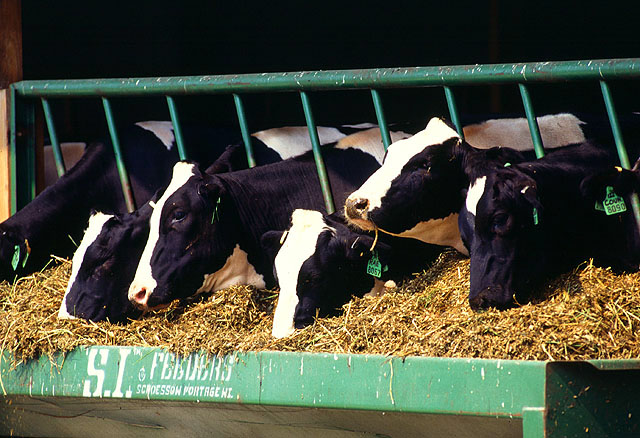
USDA will require certain dairy cattle to be tested for avian influenza before they can be transported to a different state. (Photo by Scott Bauer/USDA Agricultural Research Service)
On Tuesday, the U.S. Food and Drug Administration said tests had revealed fragments of the virus in pasteurized milk, but that they don’t pose a risk to public health.
“While we are taking this action today, it is important to remember that thus far, we have not found changes to the virus that would make it more transmissible to humans and between people,” the USDA said Wednesday.
It has been a month since the virus was first confirmed to have infected dairy cattle in Texas. The virus has now been detected in 33 dairy herds in eight states, the USDA said. Part of that spread has been attributed to the transportation of infected cows to new herds.
The cows most often recover from infection after a week or so, but their tainted milk cannot be used for commercial human consumption. The virus is often deadly for poultry and can rapidly infect flocks.
The rules set to take effect on Monday require lactating dairy cattle to test negative for influenza A before they are transported across state lines, and that requirement might be expanded to other types of dairy cattle in the future.
Labs must also report their confirmed infections of livestock to the USDA, and certain herd owners must provide details about where their cattle have been transported.
Further information about the new rules is forthcoming, and state agriculture officials declined for now to say what impact they will have on Iowa dairy farmers.
“We are still awaiting specific guidance from USDA regarding this new interstate movement order,” said Don McDowell, a spokesperson for the Iowa Department of Agriculture and Land Stewardship.
John Maxwell, a dairy farmer near Davenport, Iowa, predicted that the effects for most dairies in Iowa will be inconsequential and that it’s best to be cautious and increase testing until more is known about the disease.
“We have to do tests anyway,” he said, in reference to dairy cattle he sells out-of-state. “So it would be one more test and whatever the cost it might be. One more is not the end of the world.”
The USDA has said it will reimburse farmers for testing of sick and asymptomatic cattle.
States with confirmed bird flu infections of dairy cattle include Kansas, Idaho, Michigan, New Mexico, North Carolina, Ohio, South Dakota and Texas.
A virus similar to what has infected cows has been found in poultry flocks in Kansas, Michigan, Minnesota, New Mexico and Texas, the USDA said.
by Jared Strong, Virginia Mercury
Virginia Mercury is part of States Newsroom, a nonprofit news network supported by grants and a coalition of donors as a 501c(3) public charity. Virginia Mercury maintains editorial independence. Contact Editor Samantha Willis for questions: info@virginiamercury.com. Follow Virginia Mercury on Facebook and Twitter.
Agriculture
The Role of Artificial Intelligence in Revolutionizing Farming
Artificial intelligence (AI) is transforming the agricultural landscape, offering innovative solutions to age-old farming challenges. Farmers can now achieve higher efficiency, sustainability, and productivity levels by integrating AI into various aspects of agriculture. Here’s an overview of how AI is reshaping modern farming practices:
1. Precision Farming
Precision farming is at the forefront of the agricultural revolution, leveraging AI to make farming more accurate and controlled. AI systems analyze data from satellites, drones, and ground sensors to monitor soil and crop health, moisture levels, and more. This precise data-driven approach enables farmers to optimize irrigation, fertilization, and pesticide application, significantly enhancing crop yields while conserving resources.
2. Agriculture Robots
AI-driven robots are redefining the traditional farming workforce. Capable of performing tasks such as planting seeds, harvesting crops, and eliminating weeds with remarkable accuracy, these robots minimize the need for manual labor. Their precision and efficiency can lead to substantial productivity gains and can help address labor shortages in the agricultural sector.
3. Intelligent Spraying
Intelligent spraying systems represent a leap forward in pest and disease management. Equipped with AI, these systems can detect and differentiate between crops and weeds, targeting specific areas with pesticides or herbicides as needed. This targeted approach reduces chemical usage, minimizing environmental impact and operational costs.
4. Predictive Insights
AI’s ability to analyze vast amounts of data offers predictive insights that were previously unimaginable. From determining the optimal time for sowing seeds to predicting crop yields and market trends, AI helps farmers make informed decisions. This predictive power can lead to more efficient planning, reduced waste, and increased profitability.
The Future of Farming with AI
As the global population continues to grow, the demand for food production increases, placing pressure on the agricultural industry to find sustainable and efficient solutions. AI stands as a beacon of innovation, offering the potential to meet these demands while addressing environmental concerns. The adoption of AI in farming practices supports food security and paves the way for a more sustainable and productive agricultural future.
By embracing AI technologies, farmers can significantly improve their operations, reduce their environmental footprint, and contribute to a more sustainable food system. As AI continues to evolve, its integration into agriculture promises to bring even more groundbreaking changes to the way we grow our food.
Agriculture
Battling the Bugs: Winning Strategies for a Pest-Free Vegetable Garden
Gardening is a labor of love, but when harmful pests like Japanese beetles and aphids invade, they can turn your labor into a battle. However, with the right strategies, it’s a battle you can win, all while maintaining your garden’s ecological harmony. Here’s how to protect your vegetable garden without resorting to harsh chemicals.
Identify Before You Act
The first step in any pest control strategy is knowing your enemy. Incorrectly identifying insects can lead to unnecessary or harmful interventions, as not all bugs are foes. Many insects play beneficial roles, such as pollination or preying on harmful pests. Take the time to observe and research the insects in your garden to ensure your actions are informed and targeted.
Enlist Natural Allies
Nature has its own pest control mechanisms, and by leveraging these, you can maintain a natural balance in your garden. Ladybugs and parasitoid wasps are among the garden’s defenders, preying on aphids and other pests. Encouraging these natural predators can help keep pest populations under control, reducing the need for intervention.
Opt for Natural Repellents
Instead of reaching for chemical pesticides, consider natural repellents that can deter pests without harming your garden’s ecosystem. Garlic, chili pepper, mild soap, and essential oils are all effective at keeping pests at bay. These natural remedies can protect your crops while preserving the health and safety of your garden and its inhabitants.
Rotate Your Crops
Crop rotation is a time-tested method for pest management. By changing the location of your crops each year, you disrupt the lifecycle of pests that specialize in certain plants. This simple practice can significantly reduce the likelihood of infestation and soil-borne diseases.
Implement Traps and Barriers
Physical interventions, such as traps and barriers, offer direct and often immediate protection for your plants. Sticky traps can catch flying insects, while protective netting keeps a range of pests from reaching your vegetables. These methods can be particularly effective when used as part of a broader pest management strategy.
The Path to a Pest-Free Garden
Armed with these strategies, gardeners can defend their vegetable patches against unwanted invaders in ways that enhance, rather than harm, the garden’s natural balance. Remember, the goal is not to create an insect-free garden but to manage pests in a way that supports a healthy, productive ecosystem. By observing, identifying, and acting thoughtfully, you can enjoy the fruits (and vegetables) of your labor in a garden that thrives in harmony with nature.
Agriculture
Farmers’ Markets: Pillars of the Local Economy
Farmers’ markets are not just outdoor pantries stocked with the freshest produce; they’re key players in nurturing the local economy. Here are three compelling reasons why these community hubs are invaluable.
Boosting Small Businesses First and foremost, farmers’ markets are lifelines for small-scale farmers and producers. These markets offer a platform for direct sales, cutting out the middleman and allowing farmers to retain a significant share of the profits. This financial model not only supports the livelihoods of local farmers but also pumps money back into the community by fostering job creation and economic growth, especially in rural areas.
Cultivating Community Beyond economics, farmers’ markets serve as communal gathering spaces that strengthen ties among residents. They attract a mix of locals and tourists, creating a vibrant, social atmosphere. This influx of visitors benefits nearby businesses like cafes, shops, and restaurants, leading to a ripple effect of economic activity. A farmers’ market presence can transform a quiet neighborhood into a bustling, sought-after destination, enhancing local pride and community spirit.
Encouraging Sustainability Lastly, these markets champion environmental sustainability. By emphasizing locally sourced and seasonal items, they reduce the need for long-haul transportation, which is a significant contributor to greenhouse gas emissions. Shopping at farmers’ markets means supporting a system that prioritizes the planet, offering an eco-friendly alternative to the conventional food supply chain.
Why not visit your local farmers’ market? You’ll enjoy high-quality, fresh food while contributing to a more robust, self-reliant, and sustainable local economy. Supporting farmers’ markets is a win for the environment, a win for the community, and a win for your taste buds!
Agriculture
Friends of the Garden: Nature’s Allies in Boosting Your Vegetable Yield
In gardening, creating a thriving and productive vegetable patch is akin to orchestrating a symphony of nature. Among the key players in this natural harmony are various insects and plants, each contributing uniquely to the garden’s success. Let’s delve into how these garden allies can protect and enhance your vegetable yields, ensuring your garden flourishes.
Pollinators: The Garden’s Buzzing Workers
Pollinating insects, such as butterflies and bumblebees, are at the heart of the garden’s ecosystem. These vibrant visitors are vital for the pollination of many crops, playing a crucial role in the garden’s productivity. Attracting them is simple—plant nectar-rich flowers like yarrow, sage, and sunflower, and watch as these buzzing workers carry pollen from one plant to another, aiding in the growth of your vegetables.
Solitary bees, which don’t form colonies like their honeybee cousins, are another boon to any garden. These efficient pollinators can be encouraged to take up residence near your garden by providing them with insect blocks or shelters, creating a haven for these friendly insects.
Repellent Plants: Nature’s Pest Control
Integrating certain plants into your garden can naturally deter pests, reducing the need for chemical interventions. Garlic, chives, and mint are not just culinary favorites but also natural repellents, keeping unwanted visitors at bay with their strong scents. Planting these among your vegetables can help create a pest-resistant oasis.
Ladybugs: The Aphid Assassins
Ladybugs, with their appetite for aphids and other garden pests, are invaluable allies. These cheerful beetles can consume vast numbers of aphids, protecting your plants from damage. Flowers like daisies and tansies can attract and retain ladybugs in your garden, providing them with a habitat and food source.
Earthworms: The Underground Architects
Beneath the garden’s surface, earthworms play a pivotal role in maintaining soil health. These subterranean creatures enhance soil structure, promote aeration, and facilitate nutrient availability, making it easier for plants to thrive. Maintaining rich, organic soil and minimizing pesticide use will encourage earthworm activity, ensuring your garden’s soil remains fertile and vibrant.
Cultivating Synergy
By understanding and fostering these beneficial relationships, gardeners can create a vibrant ecosystem where plants and insects work together for mutual benefit. This natural approach increases vegetable yields and promotes a healthy, sustainable garden environment. Embrace these friends of the garden, and watch as your vegetable garden transforms into a testament to the power of working hand in hand with nature.
Agriculture
Your First Vegetable Garden: 5 Easy Veggies for Beginners
Embarking on creating your first vegetable garden is an exciting venture that promises the joy of homegrown produce. Whether you have a spacious backyard or a modest balcony, starting with the right vegetables can make all the difference. Here’s a guide to the top five veggies that are friendly for gardening novices, ensuring a bountiful and rewarding harvest.
1. Tomatoes: The Versatile Starter
Tomatoes are the go-to for many first-time gardeners. Their adaptability and minimal maintenance make them a perfect match for beginners. Whether you opt for a container garden on your balcony or a dedicated garden bed, tomatoes thrive in the warmth of full sun. Watching your tomatoes grow from tiny seeds to juicy fruits is a fulfilling experience that can ignite a lifelong passion for gardening.
2. Carrots: The Underground Delight
Carrots come next, with their straightforward growing requirements, especially if you pick the short varieties. These root vegetables ask for little more than the correct sowing technique and timing. Carrots are planted in loose, compact soil and promise a sweet, crunchy harvest. Imagine the satisfaction of pulling up your carrots, ready for a fresh salad or a healthy snack.
3. Zucchinis: The Generous Grower
For those looking for quick results and plentiful yields, zucchinis are the answer. These robust plants love sunny spots and are known for their resilience against pests and diseases. The zucchini plants will reward you with an abundant supply, perfect for baking, grilling, or sharing with neighbors and friends.
4. Leafy Greens: The Flexible Friends
Leafy greens like lettuce and spinach are wonderfully versatile and forgiving for first-timers. They can thrive both in the ground and pots, making them suitable for various garden setups. With a quick growth cycle, leafy greens offer the chance to enjoy multiple harvests throughout the growing season. There’s nothing like the taste of freshly picked greens in your salads or sandwiches.
5. Radishes: The Speedy Sprouts
Radishes wrap up our list with their super-fast growth rate, making them ideal for those eager to see results. Radishes can be harvested just a few weeks after planting, perfect for a beginner’s garden, providing a peppery kick to your dishes.
Kickstart Your Gardening Adventure
With these five easy-to-grow vegetables, your journey into gardening is poised to be fruitful. Not only will you enjoy the freshness of homegrown produce, but you’ll also relish the satisfaction that comes with tending to your garden. Remember, local gardening stores are treasure troves of information and resources to help you. So, why wait? Plant those seeds and watch your garden and green thumb grow.





